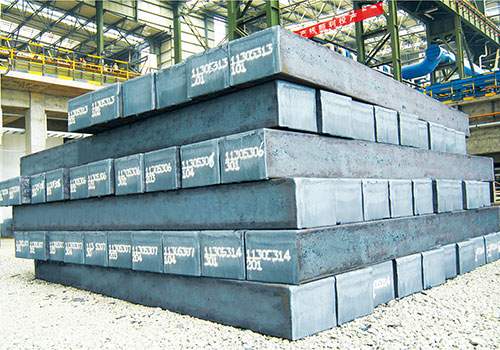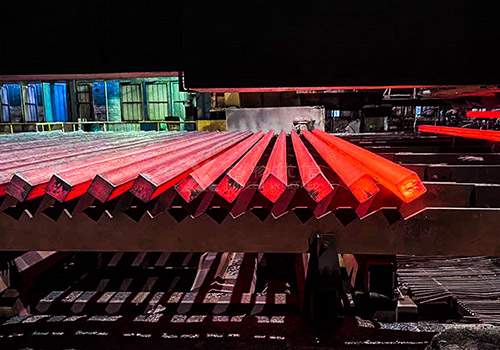
Billet Steel vs Forged: Which Is Better for Your Project?
Table of Contents
Introduction

When embarking on a metalworking project, the choice between billet steel and forged steel can be pivotal to the success of the final product. Each type of steel offers distinct advantages and characteristics that make them suitable for different applications. This in-depth guide will dissect the properties, manufacturing processes, and specific use cases of billet steel and forged steel, equipping you with the knowledge to make an informed decision for your project.
Understanding: Billet Steel vs Forged
What is Billet Steel?
Billet steel is a semi-finished steel product that begins as molten metal poured into molds to form solid, rectangular or square ingots. These ingots are then further processed through hot or cold rolling, extrusion, or other methods to produce a wide range of steel products with varying dimensions and properties.
What is Forged Steel?
Forged steel is created by heating steel to a malleable temperature and then shaping it through the application of force using hammers, presses, or other forging tools. This process, known as forging, can be performed hot or cold and results in a stronger, more durable metal with a more consistent grain structure.
Key Differences: Billet Steel vs Forged Steel
- Manufacturing Process: Billet steel involves casting and subsequent rolling or extrusion, while forged steel is shaped through the application of force.
- Strength and Grain Structure: Forged steel generally has a more uniform grain structure and higher strength due to the forging process.
- Cost: Billet steel is often more cost-effective due to the simplicity of the manufacturing process.
- Applications: The choice between billet and forged steel depends on the specific requirements of the project.
Applications and Considerations: Billet Steel Vs Forged
Industrial Applications
Both billet and forged steel find applications across various industries, including automotive, aerospace, construction, and heavy machinery.
1. Automotive Industry
- Billet Steel: Used for less critical components such as body panels and some structural parts.
- Forged Steel: Used for high-strength components like crankshafts, connecting rods, and suspension components.
2. Aerospace Industry
- Billet Steel: Used for non-critical structural components.
- Forged Steel: Used for critical components like landing gear, engine parts, and turbine blades due to its superior strength and fatigue resistance.
Construction and Infrastructure
- Billet Steel: Used for rebar in concrete structures and structural beams.
- Forged Steel: Used for high-strength fasteners, specialized components, and heavy-duty construction equipment.
Heavy Machinery
- Billet Steel: Used for general machinery frames and components where high strength is not a primary concern.
- Forged Steel: Used for high-load bearing components, such as gears, axles, and machinery parts that require high strength and durability.
Billet Steel vs Forged Steel Specifications
| Specification | Billet Steel | Forged Steel |
|---|---|---|
| Manufacturing Process | Casting and rolling/extrusion | Forging (hammering/pressing) |
| Strength | Moderate | High |
| Grain Structure | Less uniform | Uniform |
| Cost | Lower | Higher |
| Fatigue Resistance | Moderate | High |
| Machinability | Good | Excellent |
| Common Applications | General construction, automotive body panels | High-strength components, aerospace parts |
Case Studies and Real-World Applications: Billet Steel Vs Forged

1. Automotive Component Manufacturing
In the automotive industry, billet steel is often used for body panels due to its formability, while forged steel is used for engine components and suspension parts that require high strength.
2. Aerospace Component Production
In aerospace, forged steel is preferred for critical components like landing gear and turbine blades due to its superior strength and fatigue resistance.
3. Construction Rebar
Billet steel is commonly used for rebar in concrete structures because of its cost-effectiveness and availability.
4. Heavy Machinery Components
Forged steel is used in heavy machinery for components that experience high stress and load, such as gears and axles.
5. Precision Instruments
Forged steel is often chosen for precision instruments and high-precision machinery due to its consistent grain structure and high strength.
6. Power Transmission Components
Forged steel is used in power transmission components, such as gears and shafts, where reliability and durability are critical.
7. Marine Applications
Billet steel is used in marine applications for its corrosion resistance, while forged steel is used for high-strength components like propeller shafts and marine fasteners.
8. Architectural Structures
Billet steel is used in the construction of architectural structures for its ease of fabrication and cost-effectiveness.
9. Industrial Tools
Forged steel is used in the manufacturing of industrial tools that require high strength and durability, such as hammers and chisels.
10. Sports Equipment
Billet steel is used in the production of sports equipment that requires a balance of strength and weight, such as golf club shafts and bicycle frames.
Conclusion
The decision between billet steel and forged steel should be based on a thorough understanding of the project’s requirements. Billet steel offers a cost-effective solution with good formability, making it suitable for less critical applications. Forged steel, with its superior strength and fatigue resistance, is ideal for high-stress applications where performance and durability are paramount. By considering the properties, manufacturing processes, and specific use cases of both billet and forged steel, you can make an informed decision that optimizes both the performance and cost of your project.
FAQ
What is the main difference between billet steel and forged steel?
The main difference lies in their manufacturing processes. Billet steel is cast and then rolled or extruded, while forged steel is shaped through hammering or pressing, resulting in a more uniform grain structure and higher strength.
Which is stronger, billet steel or forged steel?
Forged steel is generally stronger and has a more uniform grain structure due to the forging process.
Is billet steel more cost-effective than forged steel?
Yes, billet steel is often more cost-effective due to the simpler manufacturing process compared to forging.
What are the common applications for billet steel?
Billet steel is commonly used in general construction, automotive body panels, and other applications where formability and cost are more critical than strength.
What are the common applications for forged steel?
Forged steel is used in high-strength components, such as those found in the aerospace industry, heavy machinery, and other applications where strength and durability are paramount.






